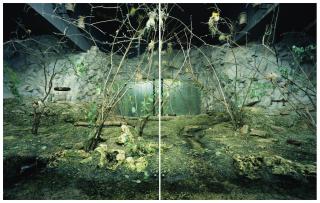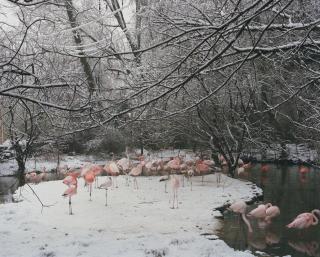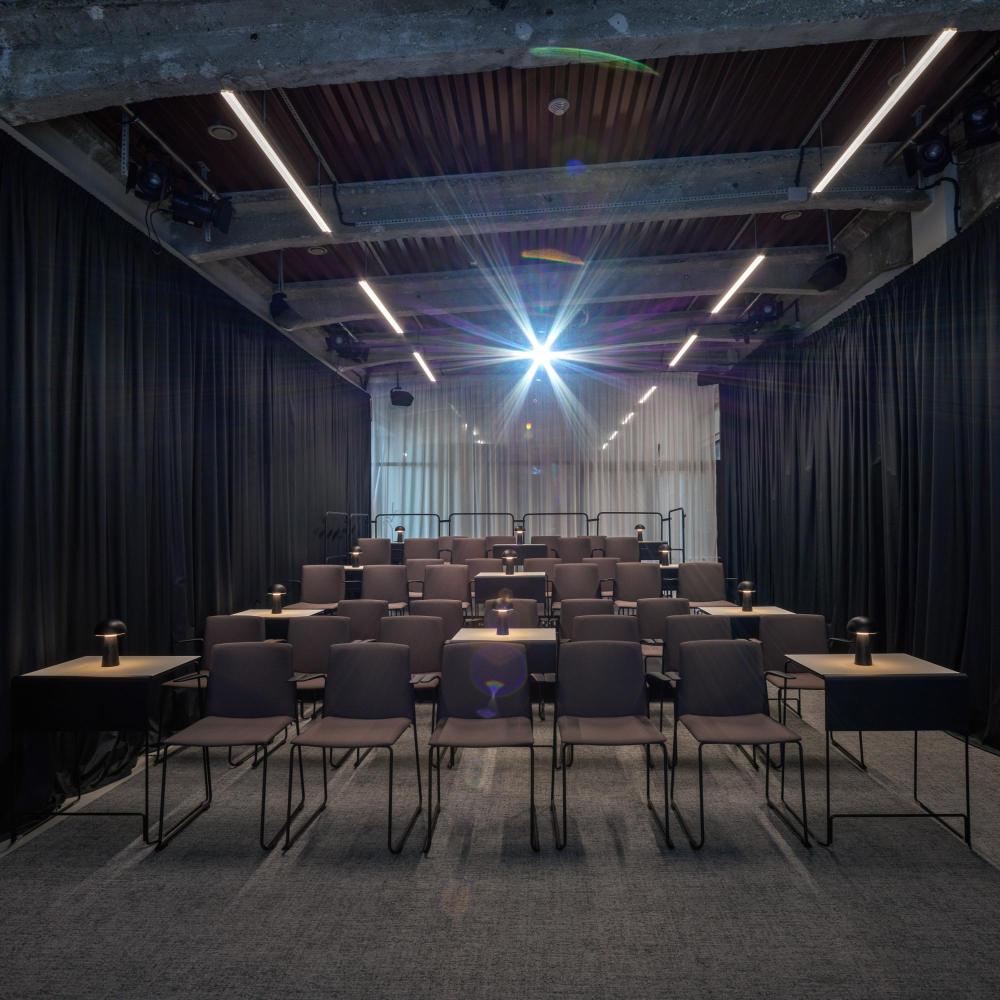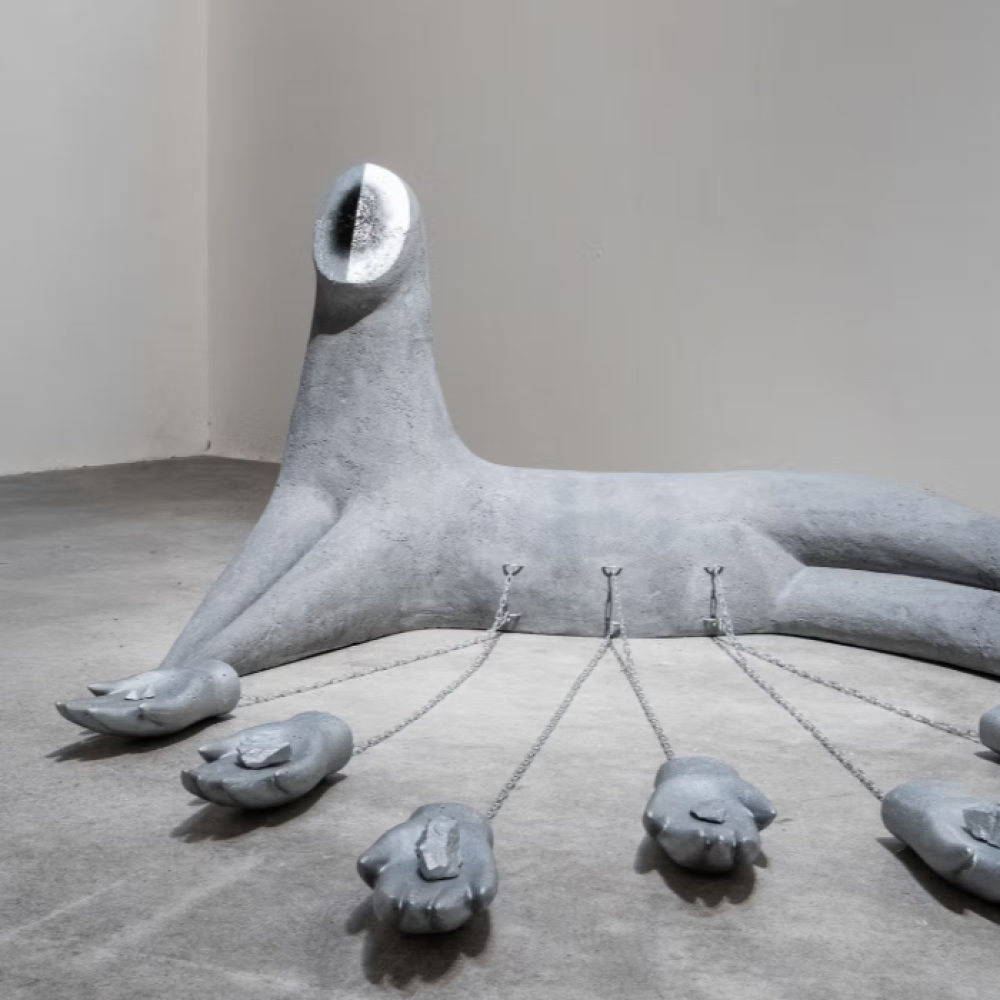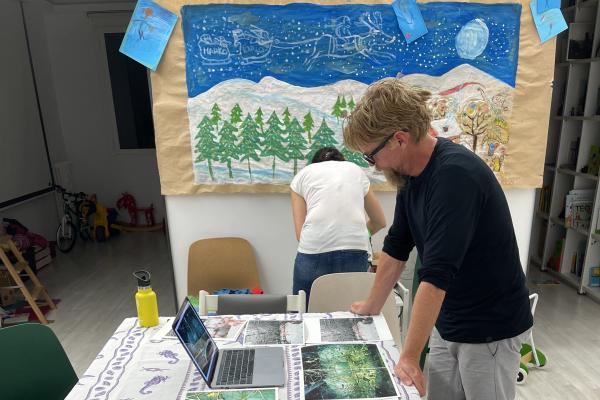
The interview was conducted on the occasion of the group exhibition Brave World at the Telegraph Gallery. The exhibition is curated by Tevž Logar and conceptualized by Gregor Podnar. Interviews with the artists were conducted by art historian Barbora Kundračíková, who works at the Department of Art History at Palacký University and the Olomouc Museum of Art-SEFO.
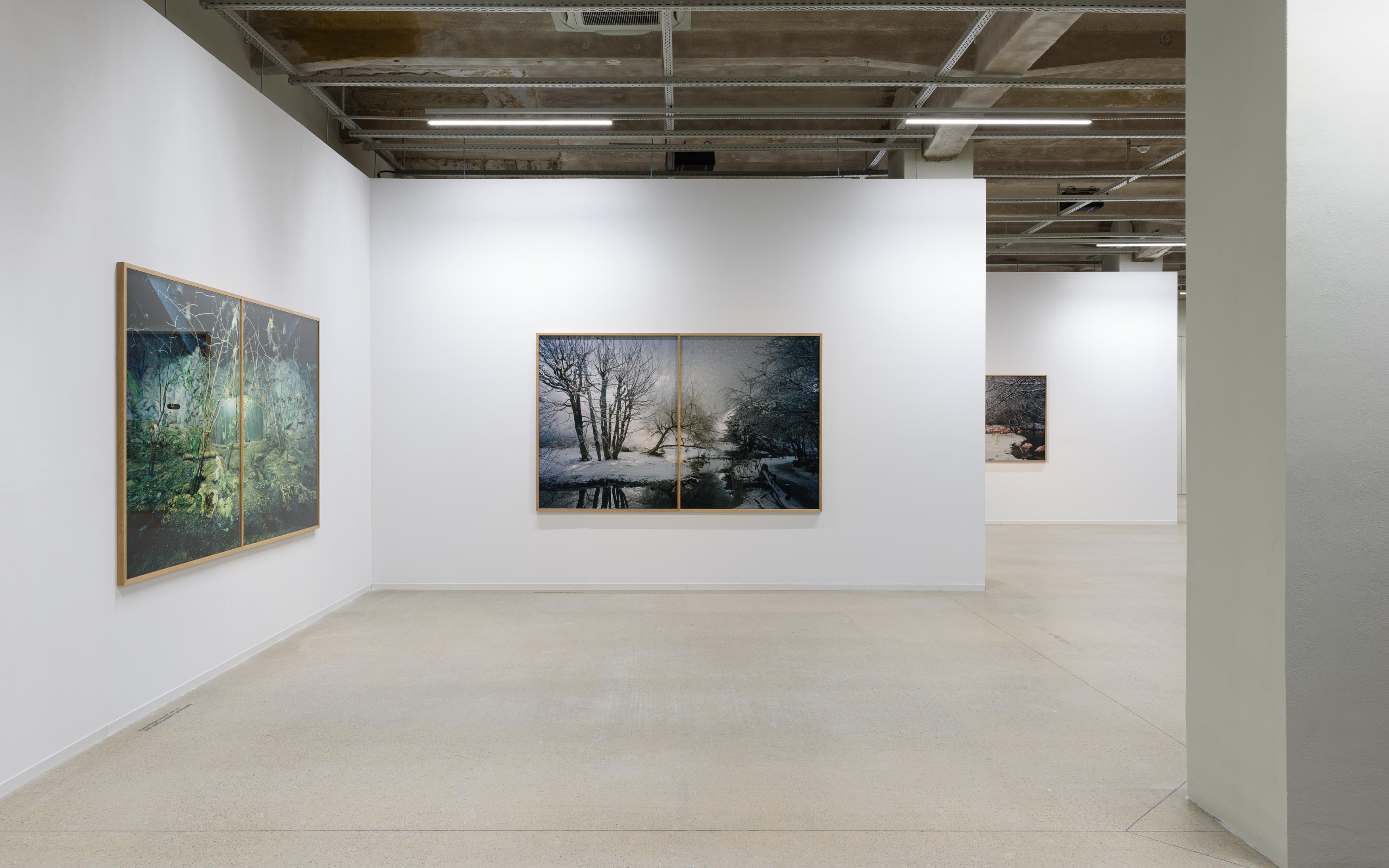
You are one of those fully concerned with the means of the media – in this case, photography. On the other hand, your work is very often described as “painting with a camera”. The process seems very interesting to me. The technology itself. Can you explain the way you use it and think about it?
But what is painting nowadays? When I started my studies at the Academy of Fine Arts in Venice, the main course I had to attend was Pittura, which means “painting” in Italian. The content of the course was much more than painting, as we also had to interact with other media such as video, performance, installation, photography, etc. So, the word painting was obsolete, but the name of the course was still Pittura. Nevertheless, it doesn’t mean that we didn’t paint, in fact, the first thing we did was specifically paint, but our goal, as students, was just to find our way. When in this first year at the Academy I had to interpret painters such as, among others, Cézanne, Gauguin, or the Impressionists painters it changed my perception of colours, and light… In a way, everything changed around me. At least in my head and in my eyes. I started using photography simultaneously and since then I have never stopped. I feel closer to this medium. I like to refer also to the painting as a final format of the work, composition, and as a motive.
There was always a close relationship between photography and painting in a positive and “less positive” way, even before photography was invented when painters were using the “camera obscura”. I also believe that my imagination is born in my mind first and then I can see it in the photo. Like many painters of the past, they first saw their work in their minds and then on canvas. Thus, the “point of view” is very important to me. Where I decide to position myself, where I can install the tripod and the camera, physically and at the same time conceptually. When I define these aspects, then I try to avoid interfering too much, minimizing the adjustments on the camera, etc. A lot of times I expose the negative to long exposures, sometimes all night. The negative has the characteristic to sum the light, and capture moving shadows, hidden colours, and places. This characteristic shows us the darkness in a completely different way than our eyes perceive it. For me the “photographic decisive moment” is not important, I want to capture a temporal space. Often suspended between past – memories, present, and the future. I work with a 15 years “old school” wooden camera and in analog technique. I feel that this is more a mental, rather than physical, approach to the aesthetic, but of course, it is both. I like to reduce the number of my images. I already do this while I am taking the pictures, but I also do it later, during the selection phase. I like to work for years on a project and have the luxury of showing just some work.
I find it quite intriguing – this ability to be on both sides at once. I'm not so much thinking of the photography/painting relationship, but rather the contrast of stillness, even a kind of distance, and the ability of the image to include you, to incorporate you. To take the presence of eternity for granted. Do I understand your approach correctly?
Whenever I’m creating my images, it’s not just about history, memory, or poetics, but it is also about my personal experience. I always include myself in my work, it is also about my life. I’m the first viewer of what surrounds me, the first viewer of my works, and the first critic. At the same time, it is my experience, and my curiosity, which make me go further. For example, when I was studying in Venice, probably the most photographed place in the world, I wanted to leave my “mark”. It was the place where I lived, I had it in front of my eyes every day, and I knew the city quite well. I don’t know if I was lucky or if I was just at the right place at the right moment, but while I lived there, the city council decided to repair some of the channels. They physically closed several hundred meters of the channels; they pumped out the water and during the day they worked on the foundations of the city. During the night these places were empty, and I jumped inside because I wanted to see Venice under the water level. Then I started taking pictures. My idea was to take pictures of Venice under water level and therefore to show Venice from inside of its veins. A contemporary city that needs maintenance, but also a historical Venice surrounded by a magic night light. I’m talking about a time when I was still a student, almost 20 years ago, but nowadays I still use the same approach and the same process. Of course, now I’m more conscious of what I’m doing and what I’m adding to my work, but at the same time I don’t want to lose the “innocence”.
And would you say that this is some kind of trend in the “field” opposing the current state of affairs, perhaps? I'm thinking of course of Hilla and Bernd Becher and their students, but also of the specific atmosphere that runs through Central Europe, the “dreaming of the past”, the location, the identity, and so on.
Some time ago a critic said that I have Becher’s influence with an additional Mediterranean spirit. I don’t know, of course, I respect Hilla and Becher and their students… I also like many other artists such as Ed Ruscha, David Hockney, Walker Evans, and Diane Arbus. That’s normal, but of course, I also try to add my dreams, history, etc. All my works are related to my identity, memories, and origins. I have been working for more than 20 years on these topics and I don’t take too much care about trends in the industry. In a certain way, Slovenia is historically and geographically related to Central Europe. I also lived four years in Munich, but I spent my childhood and school years on the border between Slovenia, former Yugoslavia, and Italy. I have much more influence from the Mediterranean. Now that I am living in Madrid, I feel like a Mediterranean with many “shades”.
So, what does the Munich Zoo mean? Or rather, what role does a certain place play in your work?
For me, it was a place where I could take my one-year-old son Karlo to have a good time together in a completely new city and a different cultural environment as it is in Bayern. Later, this place became my "atelier" where I could work and explore alone. The place where I search for my Mediterranean “roots” in snowy Munich. Looking to this place as a paradise, but also as a golden cage. A place where you are protected, but at the same time you are in jail. Not just the animals living there, but also as a self-porter of our experience living in Munich. It was a golden place, with some difficulties. The “work” has a lot of painting and photographic background, but I already talked about this.
How do you move or behave in the urban landscape? How do you detect what is important?
I just try to live my life in a conscious and serene way. Of course, I also have my doubts, my nightmares. But I don’t want to stop fighting for my dreams. Especially when I move from one place to another, I need time to feel it, to get to know it. Sometimes a year, two years… Looking back, everything is always much easier! I like to walk and observe. I like to ride my bike. In a way, this is a kind of meditation, but it’s also a way to know many people and places which I could have never discovered without the bicycle. If I find something interesting, or something interesting finds me, I just take a photo on my phone or small format camera, and then I return to this place with the large format camera, and a tripod, and when the light is as I like it. Usually, I take just one image, and I don’t repeat it anymore.
I hope you would not mind me asking, but as I understand it, you wear glasses in real life – so vision, the ability to see clearly, in detail, seems to be a challenge. What does detail mean in this context – bearing in mind the size (in the plural sense) of the final image?
"Details" mean a lot to me, because, as you say, I don't see all of them, or I see them differently. I have had quite a lot of problems with vision since I was born. That influenced me very much, but at the same time contributed to what I’m today. Also, and especially as an artist. Due to this minus vision, I always feel more comfortable at night when we all have problems. When it is dark, you have to use other senses to be able to challenge the darkness, such as hearing, vibrations, experiences, intuition… For me this challenge between darkness and the individual, the artist, is physical, but mostly mental.
Considering my vision difficulties, I always feel more comfortable in the darkness, where everybody has difficulties. In a way, in darkness, we are more “equalized”. This approach starts in my childhood, when I was just playing with my brother and friends but continues also in adulthood and my artistic practice, as I explained before. It influenced me a lot in my work. Once, I titled one of my shows Focusing on the Invisible. In a way, it makes no sense, because how can you focus on something invisible? But at the same time, it was really about this. Photosensitive material has this characteristic, to sum up the light, and to discover things that we cannot see or that we see differently.
In real life, I don’t use glasses, because wearing them doesn’t help me. I have different problems (micro-moving of the eyes constantly, "crossed-eyes", and not enough pigment which also affects vision). Unfortunately, I cannot solve these problems with glasses. When I was young, the doctors thought that I could not go to a normal school, because of these vision problems, but fortunately, my parents didn’t give up and I did all my school with no problems, I just focused more on listening, rather than reading or studying… and I could make it. Back to the glasses, after I turned forty, I added to all my vision problems the “eye strain”. This is a common problem and it can be corrected with glasses.
As always, to be fully "in", to imagine or capture something, somehow leads the mind and imagination beyond the visible, into the darkness of hidden realms. It may be the past, it may be a memory, it may be the unconscious – what is it for you to be immersed in an image?
You completely get it! Your question is, in a way, also the answer. Nowadays it looks like everything must be fast, and superficial and has to look to cover everything. At the same time, I think as an artist, we must make a steep back or just stop a bit. To calm down and not to run so fast in the direction the majority is running. So, coming back to your question, in a way it is a lot about imagination, especially in total darkness, but at the same time, the imagination came from real life. Sometimes even real life can surprise us, more than imagination. And of course, we look at our things, at others, through our personal experience, and history.
Patrick Maynard wrote a series of articles about photography referring to it as an icon. It does not apply fully in your case, nevertheless, as I am coming back to the first question, the “rapture” is quite apparent in your work. Is this almost spiritual element important to you?
I don’t know enough about Patrick Maynard, but I think you are right. My images are not about a decisive moment; they are a temporal space. They are also “beautiful”, and you need time to pass through this “shield” of beauty and then you can start a trip through the work, through your memories, interpretation, and my experience. In this sense maybe you are right, and it becomes a kind of “mandala” of all this mix. I need a lot of time to create my works, but also viewers need time to contemplate them. Nowadays it is quite difficult because we don’t have that time to contemplate. Or at least that is my perception. Already the fact that we are talking about this, it’s a real pleasure for me!
Primož Bizjak (*1976) was born in Slovenia and lives and works in Madrid, Spain. He studied at the Academy of Fine Arts in Venice, where he graduated in 2005 under the guidance of Professor Luigi Viola. He has exhibited his work in solo and group exhibitions around the world, including the 54th Venice Biennale in 2011.
Primož Bizjak's primary technique is photography. His photos often follow the traces of human existence in space. Thanks to Bizjak, the ruin - a remnant of human creation that was once actual - becomes a contemporary object and a work of art again. In his work, he subverts the principles of chronology, works anachronistically with the remains of human activity, and updates historical references. Bizjak also plays with time in a technical sense, his nocturnes are created using an extra-long exposure time that reveals hidden outlines. His photographs thus more than ever resemble paintings in which he preserved reality.
Photo portrait:: archive of the author
Photo of the installation: Matěj Doležel
